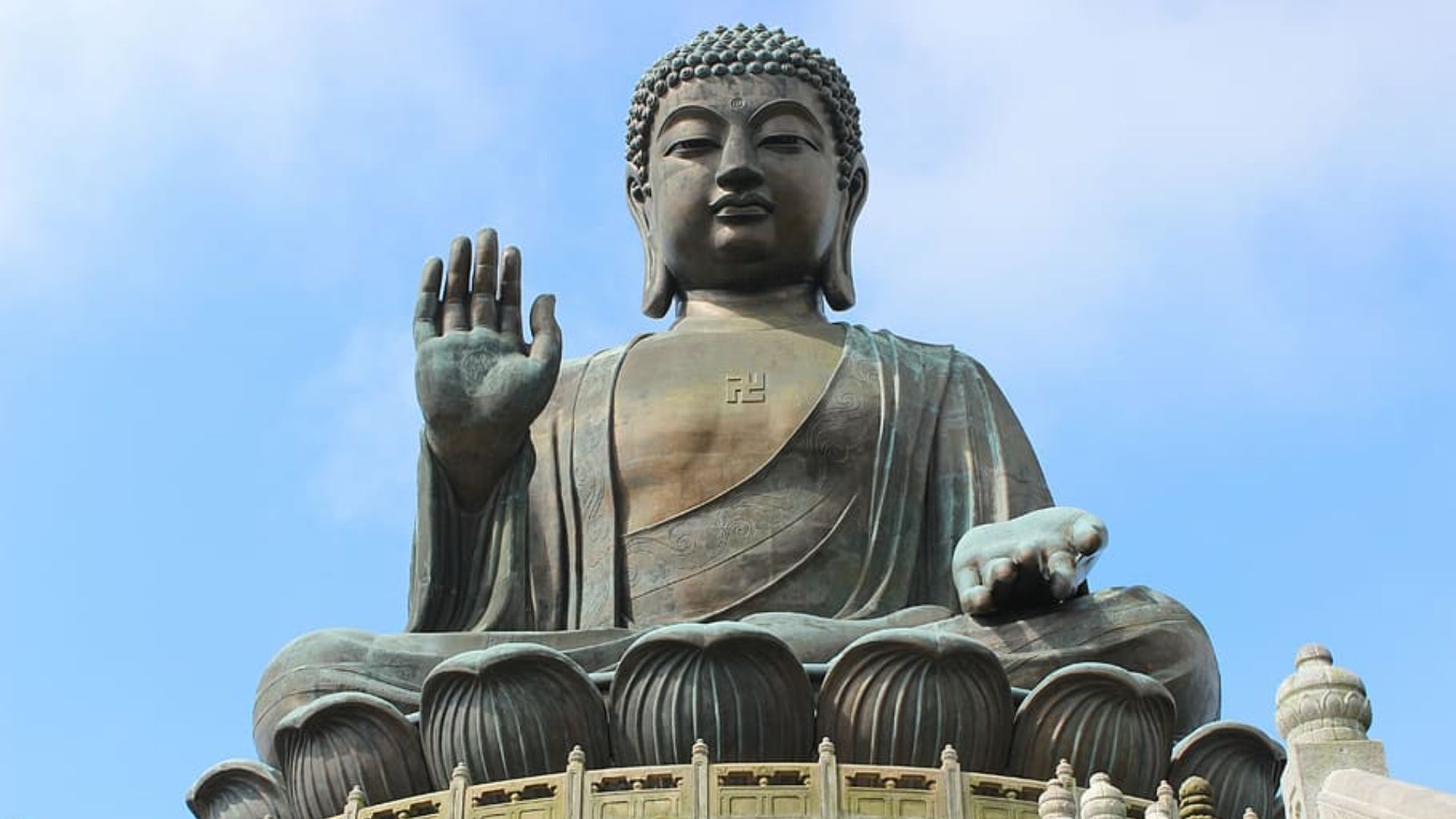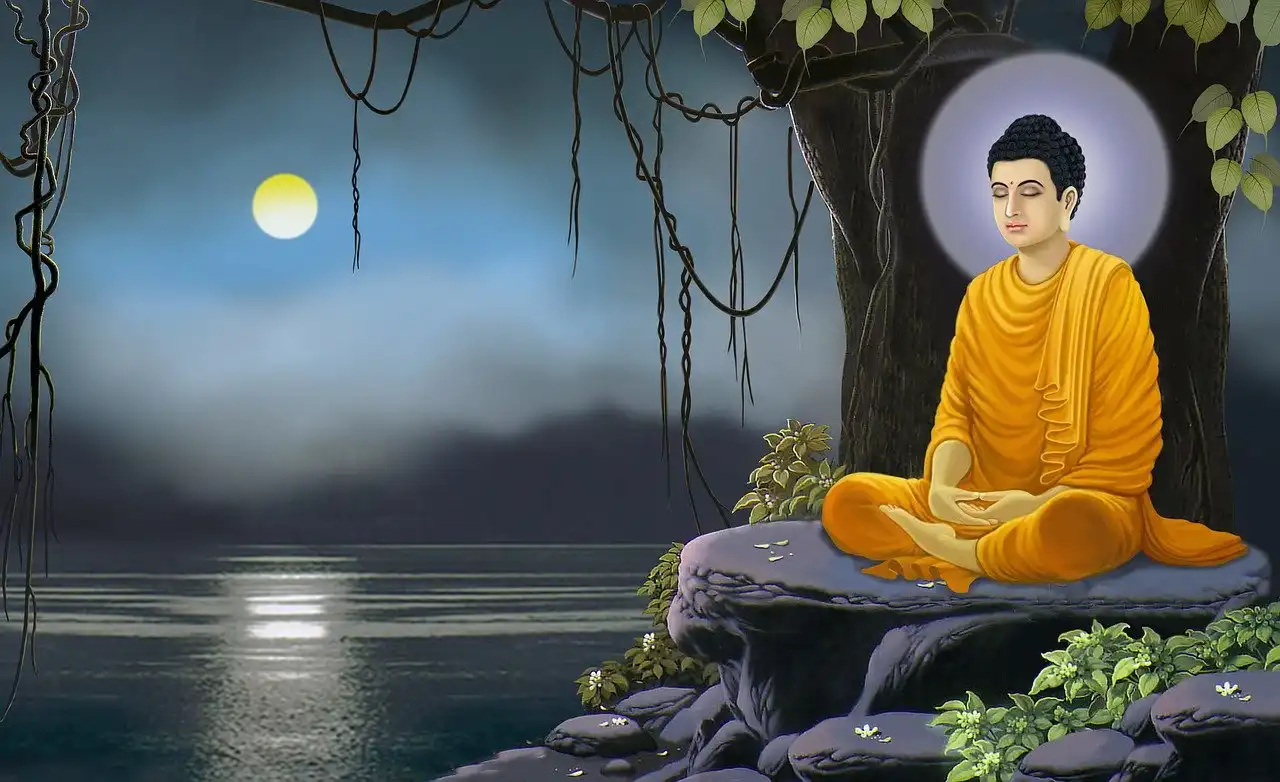Tổ Đình Minh Đăng Quang
PHẬT HỌC TỪ ĐIỂN – BUDDHIST DICTIONARY
Thiện Phúc
PHỤ LỤC (APPENDICES)
PHỤ LỤC F – Appendix F
Kinh Pháp Bảo Ðàn
The Jewel Platform Sutra
Phẩm Thứ Chín—Tuyên Chiếu—The Ninth Chapter—Proclamation
Niên hiệu Thần Long năm đầu (705 sau Tây Lịch) vào ngày rằm tháng giêng, vua Trung Tông và Tắc Thiên ban chiếu rằng: “Trẩm thỉnh hai sư An và Chiếu vào trong cung cúng dường, mỗi khi rảnh việc thì nghiên cứu về nhất thừa, hai sư đều nhường rằng, ‘phương Nam có Huệ Năng thiền sư được mật trao y pháp của Ðại sư Hoằng Nhẫn, được truyền Phật tâm ấn, nên thỉnh người đến thưa hỏi. Nay sai Nội thị Tiết Giản mang chiếu nghinh thỉnh, mong thầy từ niệm, chóng đến Kinh Ðô. Tổ dâng biểu từ bệnh, nguyện trọn đời ở nơi rừng núi. Tiết Giản thưa: “Ở Kinh Thành, các thiền đức đều nói rằng, ‘muốn được hội đạo ắt phải tọa thiền tập định, nếu chẳng nhơn nơi thiền định mà được giải thoát là chưa từng có vậy, chưa biết thầy nói pháp như thế nào?’”—On the fifteenth day of the first month, during the first year of the Shen-Lung reign (705 A.D.), Empress Tse-T’ien and Emperor Chung-Tsung issued the following proclamation: “We have invited Master Hui-Neng and Shen-Hsiu to the palace to receive offerings so that we may investigate the One Vehicle in the leisure time remaining after our myriad duties. The two Masters have declined, saying that in the South there is Dhyana Master Hui-Neng, wo was secretly transmitted the robe and Dharma of the Great Master Hung-Jen who now transmits the Buddhas’ mind-seal. We now send Chamberlain Hsieh Chien with this invitation, hoping that the Master will remember us with compassion and come to the capital.” The Master sent back a petition pleading illness saying that he wished to spend his remaining years at the foot of the mountain. Hsieh Chien said, “The Virtuous Dhyana Masters at the capital all say that to master the Way one must sit in Dhyana meditation and practice concentration, for without Dhyana concentration, liberation is impossible. I do not know how the Master explains this dharma.”
-Tổ bảo: “Ðạo do tâm mà ngộ, há tại ngồi sao? Kinh nói, ‘Nếu nói Như Lai hoặc ngồi, nằm, ấy là người hành tà đạo.’ Vì cớ sao? Không từ đâu lại cũng không có chỗ đi, không sanh không diệt, ấy là Như Lai thanh tịnh thiền, các pháp rỗng lặng, ấy là Như Lai thanh tịnh tọa, cứu cánh không chứng, há lại có ngồi ư?”—The Master said, “The Way is awakened to from the mind. How could it be found in sitting? The Diamond Sutra states that to say the Tathagata either sits or lies down is to walk a deviant path. Why? The clear pure Dhyana of the Tathagata comes from nowhere and goes nowhere and is neither produced nor extinguished. The Tathagata’s clear pure ‘sitting’ is the state of all dharmas being empty and still. Ultimately there is no certification; even less is there any ‘sitting.’
Tiết Giản thưa: “Ðệ tử trở về kinh, chúa thượng ắt hỏi, cúi mong thầy từ bi chỉ bày tâm yếu, để tâu lại hai cung và những người học đạo ở kinh thành, ví như một ngọn đèn mồi trăm ngàn ngọn đèn, chỗ tối đều được sáng, sáng mãi không cùng.”— Hsieh Chien said, “When your disciple returns to the capital, their majesties will surely question him. Will the High Master please be compassionate and instruct me on the essentials of the mind so that I can transmit them to the two palaces and to students of the Way at the capital? It will be like one lamp setting a hundred thousand lapms burning, making all the darkness endlessly light.”
Tổ bảo: “Ðạo không sáng tối, sáng tối ấy là nghĩa thay nhau, sáng mãi không cùng cũng là có ngày hết, vì đối đãi mà lập nên. Kinh Tịnh Danh nói, ‘Pháp không có so sánh vì không có đối đãi.’”—The Master said, “The Way is without light or darkness. Light and darkness belong to the principle of alternation. ‘Endless light’ has an end, too, because such terms are relative. Therefore the Vimalakirti Sutra says, ‘The Dharma is incomparable because it is not relative.’”
Tiết Giản thưa: “Sáng dụ cho trí tuệ, tối dụ cho phiền não, người tu đạo giả như chẳng dùng trí tuệ chiếu phá phiền não thì cái sanh tử từ vô thủy nương vào đâu mà ra khỏi.”—Hsien Chien said, “Light represents wisdom and darkness represents affliction. If cultivators of the Way do not use wisdom to expose and destroy affliction, how can they escape from the birth and death that have no beginning?”
Tổ bảo: “Phiền não tức là Bồ Ðề, không hai, không khác, nếu dùng trí tuệ chiếu phá phiền não; đây là kiến giải của hàng nhị thừa, căn cơ xe nai xe dê, còn những bậc thượng trí đại căn, thì không như thế.”—The Master said, “Affliction is Bodhi; they are not two and not different. One who uses wisdom to expose and destroy affliction has the views and understanding of the two vehicles and the potential of the sheep and deer carts. Those of superior wisdom and great roots are completely different.”
Tiết Giản thưa: “Thế nào là kiến giải Ðại thừa?”—Hsieh Chien said, “What are the views and understanding of the Great vehicle?”
-Tổ đáp: “Minh cùng với vô minh, phàm phu thấy hai, người trí rõ suốt tánh nó không hai, tánh không hai tức là thật tánh; thật tánh ở phàm phu mà chẳng giảm, ở Hiền Thánh mà chẳng tăng, trụ trong phiền não mà không loạn, ở trong thiền định mà chẳng lặng lẽ, chẳng đoạn chẳng thường, chẳng đến chẳng đi, chẳng ở khoảng giữa và trong ngoài, không sanh không diệt, tánh tướng như như, thường trụ chẳng đổi gọi là đạo.”—The Master said, “The common person sees light and darkness as two, but the wise person comprehends that their nature is non-dual. The non-dual nature is the real nature. The real nature does not decrease in common people nor increase in worthy sages. In afflictions, it is not confused and in Dhyana concentration, it is not still. It is neither cut off nor permanent. It does not come or go. It is not inside, outside, or in the middle. It is not produced or destroyed. The nature and mark is ‘thus, thus.’ It permanently dwells and does not change. It is called the ‘Way.’”
Tiết Giản thưa: “Thầy nói chẳng sanh chẳng diệt đâu khác với ngoại đạo?”— Hsieh Chien said, “How does your explanation of the self-nature as neither produced nor destroyed differ from that of other religions?”
Tổ bảo: “Ngoại đạo nói chẳng sanh chẳng diệt là đem cái diệt để dừng cái sanh, lấy cái sanh để bày cái diệt, diệt vẫn chẳng diệt, sanh nói không sanh. Ta nói chẳng sanh chẳng diệt là vốn tự không sanh. Ta nói chẳng sanh chẳng diệt là vốn tự không sanh, nay cũng chẳng diệt, cho nên không đồng với ngoại đạo. Nếu ông muốn biết tâm yếu, chỉ tất cả thiện ác trọn chớ suy nghĩ, tự nhiên được vào tâm thể thanh tịnh, lặng lẽ thường tịch, diệu dụng hằng sa.”—The Master answered, “As non-production and non-extinction are explained by other religions, extinction ends production and production reveals extinction. Their extinction is not extinction and what they call production is not production. My explanation of non-production and non-extinction is this: originally there was no production and now there is no extinction. For this reason my explanation differs from that of other religions. If you wish to know the essentials of the mind, simply do not think of good or evil. You will then enter naturally the clear, pure substance of the mind, which is deep and permanently still, and whose wonderful abilities are as numerous as the sand grains in the Ganges River.”
Tiết Giản nhờ chỉ dạy, hoát nhiên đại ngộ, lễ từ trở về cung dâng biểu tâu lên những lời của Tổ. Ngày mồng ba tháng chín năm ấy có chiếu tưởng dụ sư rằng: “Thầy từ vì già bệnh, vì trẩm mà tu hành, làm phước điền cho đất nước, Thầy cũng như Ngài Tịnh Danh giả bệnh nơi thành Tỳ Da để xiển dương Ðại Thừa, truyền tâm chư Phật, nói pháp bất nhị. Tiết Giản truyền lại lời Thầy chỉ dạy tri kiến Như Lai, trẩm chưa được nhiều công đức lành, gieo được hạt giống lành đời trước, mới gặp Thầy ra đời, đốn ngộ pháp thượng thừa, cảm ân đức Thầy, đầu đội không thôi, cùng dâng chiếc Ma Nạp Ca Sa và bát thủy tinh, sắc cho Thứ Sử Thiều Châu sửa sang lại chùa và ban hiệu chùa cũ Thầy ở là chùa Quốc AÂn— Hsieh Chien received this instruction and was suddenly greatly enlightened. He bowed, took leave and returned to the palace to report the Master’s speech. That year on the third of the ninth month a proclamation was issued in praise of the Master. It read: “The Master has declined our invitation because of old age and illness. He cultivates the Way for us and is a field of blessings for the country. The Master is like Vimalakirti, who pleaded illness in Vashali. He spreads the great fruit widely, transmitting the Buddha-mind and discoursing on the non-dual Dharma. Hsieh Chien has conveyed the Master’s instruction, the knowledge and vision of the Tathagata. It must be due to accumulated good acts, abundant blessings and good roots planted in former lives that we now have met with the Master when he appears in the world and have suddenly been enlightened to the Supreme Vehicle. We are extremely grateful for his kindness, which we receive with bowed heads and now offer in return a Mo Na robe and crystal bowl as gifts. We order the Magistrate of Shao Chou to rebuild the temple buildings and convert the Master’s former dwelling place into a temple to be called ‘Kuo-Ên’ or the Country’s Kindness.”



























